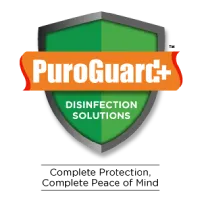Safeguarding Healthcare Environments: Understanding CDC Guidelines on Disinfection
In the realm of healthcare, maintaining aseptic and clean environments stands as a cornerstone in the battle against infections. The Centers for Disease Control and Prevention (CDC) provides invaluable guidance, to effectively combat the spread of infections at healthcare settings. Understanding and implementing CDC guidelines on disinfection is crucial, especially when it comes to safeguarding against healthcare-associated infections (HAIs).

The CDC highlights the importance of strong infection control practices in healthcare facilities. Adherence to these guidelines and practices is critical. The CDC has suggested many compositions for disinfectants to be used at hospitals and healthcare settings .These disinfectants are an important line of defense against a wide range of pathogens causing HAIs.
Healthcare infections pose a significant risk not only to patients but also to healthcare providers and visitors (patient relatives). By following CDC recommendations on infection prevention and control, healthcare facilities can significantly reduce the transmission of infections. Routine cleaning and disinfection, as outlined by the CDC, are integral steps in breaking the chain of infection transmission within healthcare environments.
Furthermore, the CDC emphasizes the significance of implementing comprehensive infection prevention programs. This includes using adequate disinfectants and taking other precautions. Understanding and incorporating these tactics into healthcare protocols brings hospitals closer to the CDC’s instructions and improves infection prevention efforts resulting in lesser transmission of HAIs.
CDC’s guidelines extend beyond recommending specific disinfectants; they encompass a multifaceted strategy. Hand hygiene, a simple but effective habit, serves as the first line of protection against diseases. The CDC emphasizes the necessity of rigorous hand washing measures for both healthcare personnel and visitors. Proper hand hygiene paired with adequate disinfection methods minimizes the risk of illness transmission within healthcare facilities dramatically.
Additionally, the CDC emphasizes the role of environmental cleaning in preventing infections. Surfaces and equipment in healthcare environments can act as disease reservoirs. It is critical to follow CDC standards for routine cleaning and disinfection of these surfaces. By following these standards, healthcare institutions reduce the danger of cross-contamination and infection spread.
In the wake of global health crises, such as the COVID-19 pandemic, the significance of CDC guidelines on infection control has been magnified. The CDC’s recommendations on disinfection, transmission-based precautions, and outbreak response have been instrumental in guiding healthcare systems worldwide through unprecedented challenges.
The influence of following CDC guidelines extends beyond the confines of healthcare facilities. It affects public perception and trust in healthcare services. Patients and their families place a high level of trust in facilities that demonstrate a commitment to adhering to strict infection control standards recognized by respectable organizations.
In conclusion, following CDC Guidelines for Disinfection and Sterilization in Healthcare Facilities is paramount in ensuring the safety and well-being of patients, healthcare workers, and the wider community. Implementing these guidelines, fosters a culture of meticulous hygiene practices within healthcare settings, creating a safer and healthier healthcare environment for everyone.


